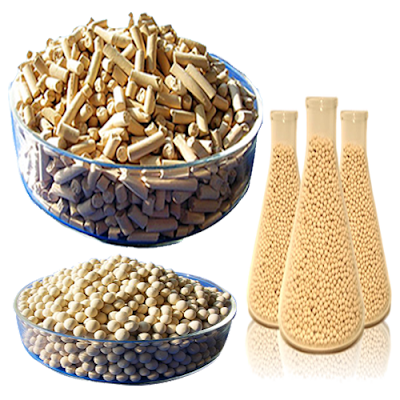Molecular Sieves are used to purify the gas streams & as absorbents to remove the water or decrease the humidity. in our blog post, we are focused on what are the things we need to know while purchasing absorbents.
Molecular Sieves working principles
The raw material s used in an industrial molecular Sieve has slightly small uniform pores. When other materials come in contact with the molecular sieve. The molecules that are the right size to fit the pores will be absorbed. Molecular sizes are measured in angstroms. Pore sizes molecular Sieve3A & molecular Sieve 4A will absorb the water while larges sizes remove larger hydrocarbons.
How a Molecular Sieve Works
The material used in an industrial molecular sieve has small uniform pores. When other substances come in contact with the molecular sieve, the molecules that are the right size to fit in the pores will be adsorbed. The molecules that are too large to fit will not. Molecular sieves function at the microscopic level; therefore their sizes are measured in angstroms. Pore sizes 3Å and 4Å will adsorb water while larges sizes remove larger hydrocarbons.
Molecular Sieve using raw Materials
In a strictly scientific sense, many regular desiccant dehumidifiers like lime, clay and silica gel also work by filtering molecules of water vapor, but marketable molecular sieves are made of synthetic crystalline alumina silicates. Unlike absorbents found in nature, the mechanism of pore size during manufacture produces selective adsorption characteristics.
The Benefits of Molecular Sieves
Molecular Sieves adsorbents usually adsorb the water much quicker than other adsorbents & same they can decrease the humidity to a much lower level than the standard silica gel. they are also more effective than natural adsorbents for applications that exceed normal room temperature when correctly used they can be effective in reducing water molecules as low as 1ppm in specialized containers or to 10% comparative humidity in packaging.
Molecular sieves typically adsorb water much faster than other desiccant air dryers and they can reduce the humidity to a much lower level than the standard silica gel. They are also more effective than natural desiccants for applications that exceed normal room temperature. When properly used, they can be effective in reducing water molecules as low as 1ppm in specialized containers or to 10% relative humidity in packaging.
Molecular sieve regeneration
While some molecular sieves that remove alcohols and aromatic hydrocarbons use pressure to regenerate the sieve, the molecular sieves that are used for water-adsorption are usually regenerated by heating. For most industrial purposes, these temperatures range from about 250° to 450°F, similar to baking temperature settings for a standard kitchen oven.
Drawbacks of Molecular Sieves
Prices are higher than other forms of adsorbents; however, molecular sieves are also more effective. The actual price per unit and final value will depend upon other factors such as the volume to be dehumidified and the level of dryness needed.
Molecular sieves, while approved for use with pharmaceuticals in Europe,
Have not been approved by the FDA for either foodstuffs or pharmaceuticals in the US.
Molecular sieves have excellent capacity for and rates of adsorption, even at elevated temperatures. They are the only desiccant that is selective for molecular size.
Molecular sieves have excellent capacity for and rates of adsorption, even at elevated temperatures. They are the only desiccant that is selective for molecular size.
Prices are higher than other forms of adsorbents; however, molecular sieves are also more effective. The actual price per unit and final value will depend upon other factors such as the volume to be dehumidified and the level of dryness needed.
Molecular sieves, while approved for use with pharmaceuticals in Europe,
Have not been approved by the FDA for either foodstuffs or pharmaceuticals in the US.
Molecular sieves have excellent capacity for and rates of adsorption, even at elevated temperatures. They are the only desiccant that is selective for molecular size.
Molecular sieves have excellent capacity for and rates of adsorption, even at elevated temperatures. They are the only desiccant that is selective for molecular size.











